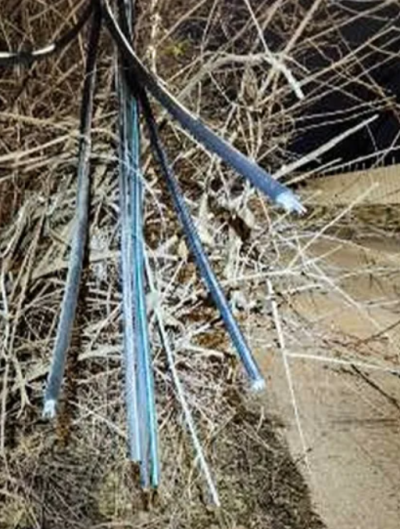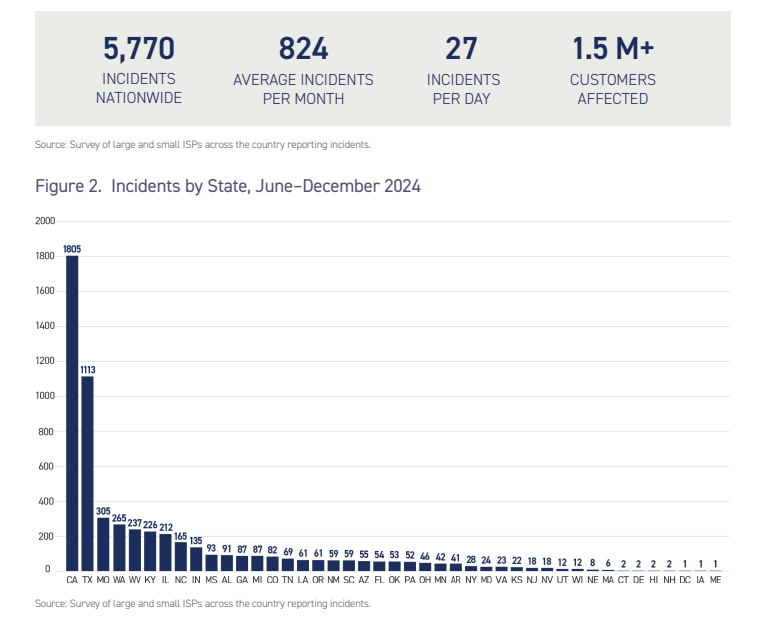- U.S. operators are sounding the alarm over rising fiber cable cuts
- Many incidents happen because thieves mistake fiber for high-priced copper
- ISPs reported over 5,700 instances of infrastructure damage in the second half of 2024
Fiber cable cuts have been a frequent thorn in the side for operators. And they’ve just about had it: Charter, which recently faced a string of fiber cuts in California and Missouri, went so far as to call the damage “nothing short of domestic terrorism.”
Fiber cuts in Van Nuys, California last month resulted in outages for more than 50,000 residential customers and 500 business customers, Charter said, including emergency services and a U.S. military base.
Though undeniably disruptive, local law enforcement doesn’t necessarily buy the "terrorism" tag. The Los Angeles Police Department said its emergency communications system was not affected by Charter’s fiber outage and that it’s investigating the incident as “felony vandalism.”

But regardless of what you call them, it’s hard to deny intentional cuts pose a big risk to network infrastructure.
How long the outages last depend on how many fibers are cut, but it’s a “very time-consuming process” to re-splice each individual fiber that gets damaged, a Charter rep told Fierce. So, service disruption can last for up to several hours.
A Windstream Kinetic spokesperson said it can typically restore service within the day following cable cuts, but full repairs may take longer depending on the extent of the damage and “the difficulty of negotiating sometimes rugged terrain.”
The main culprit, according to operators, is copper thieves who mistakenly target fiber-optic cables. Copper fetches a high price on the market and vandals often sell it to metal recyclers to make a quick buck.
“Fiber cuts caused by would-be copper thieves pose a significant threat to public safety,” said the Kinetic spokesperson. “They can prevent citizens from calling 911 and delay emergency response times and affect coordination during critical situations, endangering lives.”
For Kinetic’s part, it works with law enforcement to deter cable theft and vandalism while also increasing use of “modern surveillance equipment, GPS trackers and patrols of vulnerable infrastructure areas.”
That being said, copper theft isn’t the only cause for fiber cuts. “Third-party oversight” is another reason, noted an AT&T rep. They said the time and cost for repair varies as it depends on the type and size of the fiber, how much cabling was removed and/or damaged, the fiber’s location, etc.
"Regardless of the cause, fiber cuts disrupt essential services for our customers, public safety and the community at large," the AT&T rep added.
The bigger picture
From June to December 2024, U.S. operators reported 5,770 incidents of theft and vandalism targeting comms infrastructure, according to a report backed by trade groups like NCTA, CTIA and USTelecom. That amounts to about 824 incidents per month, with California, Texas, Missouri and Washington being the most impacted states.

The report called for states and the federal government to update their laws concerning damages to “critical infrastructure,” noting many states don’t even have criminal statutes that specifically address the issue.
“Federal law already criminalizes the willful and malicious destruction of federal government-operated and controlled communications networks,” said the report. “This statute could be a model for federal action, or policymakers may consider alternative approaches that align with updated state laws.”
It seems forward progress is being made, however. Charter noted in a press release that 11 states have passed legislation in 2025 which make attacks on critical communications infrastructure a felony offense, bringing the total number of states with such laws to 28.
